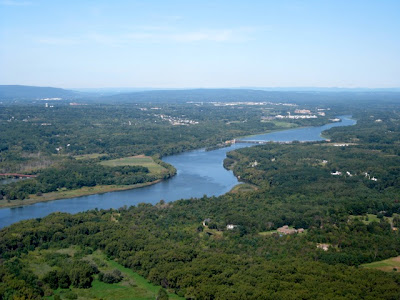 Kyle Jenks, producer of Drums Along the Mohawk Outdoor Drama is a native of Albany, NY. His outdoor drama will pay homage to iconic American author Walter D. Edmonds, noted for his historically accurate novels, including the popular Drums Along the Mohawk (1936). This American classic was made into a highly successful Technicolor feature film in 1939. Directed by John Ford, it starred Hollywood legends Henry Fonda and Claudette Colbert. Edmonds was born in 1903 in Boonville (in Oneida County, NY) and died in 1998.
Kyle Jenks, producer of Drums Along the Mohawk Outdoor Drama is a native of Albany, NY. His outdoor drama will pay homage to iconic American author Walter D. Edmonds, noted for his historically accurate novels, including the popular Drums Along the Mohawk (1936). This American classic was made into a highly successful Technicolor feature film in 1939. Directed by John Ford, it starred Hollywood legends Henry Fonda and Claudette Colbert. Edmonds was born in 1903 in Boonville (in Oneida County, NY) and died in 1998.
The world premiere of Drums Along the Mohawk Outdoor Drama coincides with the British Brigade and Continental Line’s national Revolutionary War encampment at Gelston Castle Estate. Located at 350 Galina Lane, Mohawk, NY the estate will be home to an estimated 1,000 Revolutionary War reenactors. The theme of the weekend long festivities will be to honor the 235th anniversary of the Battle of Oriskany.
One hallmark feature of a great outdoor drama is the unique way in which the story and the site are inextricably intertwined. Historic Gelston Castle Estate is located at the epicenter of a hotbed of America’s Revolutionary War activity.
After moving to Ohio, Mr. Jenks found a concentration of outdoor historical dramas there. Once he attended a performance of Tecumseh!, in Chillicothe, OH, his vision to produce his own outdoor drama instantly materialized. According to the prestigious Institute for Outdoor Drama, outdoor dramas have the potential to make a significanhttp://www.blogger.com/img/blank.gift impact on the local economy. Besides creating a way to increase total economic dollars to the Mohawk Valley, Mr. Jenks envisions the project to be an exciting way to connect the local citizenry with a feeling of ownership to this classic American story.
For more information about the drama, contact Kyle Jenks at 216 509 7502 or www.AmericanHeritageLivingHistoryProductions. Visit www.oriskany235th.org to learn more about the National reenactment weekend. Jenks is also offering an associated six day bicycle tour that visits the historic sites included in the plotline of the drama (See www.AmericanHeritageBicycleTours.com). Food, period sutlers (merchants), vendors and entertainers will also be present during the weekend.






